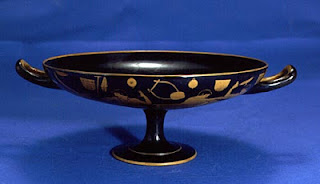The Parthenon

Unfortunately, the first temple built in 480 BCE, the original Parthenon, quickly found its demise at the hands of its enemies. Within the first eight years after construction had begun, as this limestone-based prototype wasn't even completed, Persians broke into the city of Athens and burned down the entire structure. Though this temple was dedicated to their namesake goddess, Athena, she was not with these people, as the destroyed ruins were scattered and used as defensive fortifications to separate themselves from such enemies, therefore preventing further loss or more lives, buildings, and valuable pieces of art.
Soon, however, Athens witnessed its peak as the most prominent polis (term for ancient Greek city-states) in Ancient Greek history. Having made peace with several of their most dangerous enemies, the Athenians were able to create a Pax Romana-like period of prosperity. Then secure and able to produce such a structure, the politician Perikles led the new construction of a Parthenon to Athena in 447 BCE. The Greek city states had recently formed the Delian League, a forced union of Greek city states in self-defense against the Persians. However the League continued on with a capital in Athens, proving a growth in Athenian influence. In reality, the Athenians didn't construct the current Parthenon at all. The Delian
 League's treasury was tapped for this construction as a sign of gratitude to the gods. Perikles continued to overlook the construction, although architects Iktinos and Kalllikrates were the true artists behind the construction. Built over the location of the Old Parthenon, the structure was made almost entirely of marble from the Pentelic Mountains, even though the foundations were made out of limestone and the doorways wood. This building was originally made to hold a massive sculpture of Athena, which will be explained in its own post.
League's treasury was tapped for this construction as a sign of gratitude to the gods. Perikles continued to overlook the construction, although architects Iktinos and Kalllikrates were the true artists behind the construction. Built over the location of the Old Parthenon, the structure was made almost entirely of marble from the Pentelic Mountains, even though the foundations were made out of limestone and the doorways wood. This building was originally made to hold a massive sculpture of Athena, which will be explained in its own post.
An important note about this temple is that it's columns, and therefore the entirety of the temple, were made in the Doric order. While very beautiful, this style is often called the most "simple" order. Void of many extravagant designs, the column is composed of a simple capital (top portion parallell on the picture to the line which mentions the term) and shaft, which is the long, lined portion of the column. The entrance is lined with eight columns
 League's treasury was tapped for this construction as a sign of gratitude to the gods. Perikles continued to overlook the construction, although architects Iktinos and Kalllikrates were the true artists behind the construction. Built over the location of the Old Parthenon, the structure was made almost entirely of marble from the Pentelic Mountains, even though the foundations were made out of limestone and the doorways wood. This building was originally made to hold a massive sculpture of Athena, which will be explained in its own post.
League's treasury was tapped for this construction as a sign of gratitude to the gods. Perikles continued to overlook the construction, although architects Iktinos and Kalllikrates were the true artists behind the construction. Built over the location of the Old Parthenon, the structure was made almost entirely of marble from the Pentelic Mountains, even though the foundations were made out of limestone and the doorways wood. This building was originally made to hold a massive sculpture of Athena, which will be explained in its own post.An important note about this temple is that it's columns, and therefore the entirety of the temple, were made in the Doric order. While very beautiful, this style is often called the most "simple" order. Void of many extravagant designs, the column is composed of a simple capital (top portion parallell on the picture to the line which mentions the term) and shaft, which is the long, lined portion of the column. The entrance is lined with eight columns
For anyone to do well on any Art Exam, one must know all three orders well. While this will be mentioned later in separate posts, we also recommend this site: http://www.cmhpf.org/kids/dictionary/classicalorders.html
http://academic.reed.edu/humanities/110tech/parthenon.html
http://www.ancient-greece.org/architecture/parthenon.html
http://www.goddess-athena.org/Museum/Temples/Parthenon/index.htm










